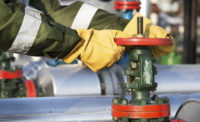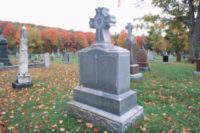Deadly mud: How a pipe blowout killed five Oklahoma oil workers

A blowout and massive fire at an oil well in Pittsburg County, Oklahoma January 22, 20118 occurred shortly after drilling crew members removed the drill pipe from the well in a process known as “tripping,” according to the U.S. Chemical Safety Board (CSB), which has found that that conditions existed that could have allowed a gas influx into the wellbore during the tripping operation.
The CSB’s investigation into the Pryor Trust Gas Well incident, which claimed the lives of five workers, has determined the series of events leading up to the explosion. The timeline descriptions reveal not only the complexity of oil well operations, but also the round-the-clock nature of the industry.
From the CSB’s factual update:
- January 21, 2018: Crew members from the Patterson-UTI Drilling Company had been drilling a gas well for over a week. Activities were being overseen by the operator of the well, Red Mountain Operating, LLC (or RMO) in Pittsburg County, Oklahoma.
- At 3:36 pm, the Patterson crew stopped drilling to remove the drill pipe from the well and change the drill bit.
- At 6:48 pm, crew members began the process of removing the drill pipe from the well. The Patterson crew pumped mud into the well during the removal of the drill pipe with the intent to keep the well full of mud. That operation involved closing an isolation valve to prevent mud from flowing out of the well. By 10:30 pm, the end of the drill pipe reached the top of the curve in the well.
- January 22, 2018: At 12:35 am, the crew pumped fluid also referred to as a “weighted pill” above the top of the curve to prevent gas influx into the lateral portion of the well.
- At 1:12 am, the crew began removing the drill pipe from the vertical section of the well. For this portion of the operation, the Patterson crew performed a “Continuous Fill” tripping method. Mud was continuously circulated in the wellbore using the Trip Tank pumps to keep the well full by replacing (?) the volume of the drill pipe removed with drilling mud. The isolation valve was open for this operation.
- At the start of this procedure, the drill pipe started pulling ‘wet’ – meaning the drill pipe being removed had not drained and still contained mud. The Patterson crew was aware that the pipe was plugged. At this point the Patterson crew attempted to pump a volume of mud also referred as a “slug” into the drill pipe to push the mud that remained in the drill pipe out, but this was not successful as the drill pipe was plugged. Therefore, the drill pipe in the vertical section was removed while it still contained mud.
- By 6:10 am, the drill pipe and drill bit were completely removed from the well. At that time, the driller closed the blind rams on the well’s blowout preventer.
- At 7:57 am, the driller opened the blowout preventer blind rams so that a new piece of drilling equipment called a bottom hole assembly could be lowered into the well. At 8:09 am, mud was pumped through the bottom hole assembly to test the new equipment.
- While the rig crew tested the bottom hole assembly equipment, the mud pits gained 107 barrels of mud. Mud pit gains are an indication of a possible gas influx in the well. Data obtained by the CSB indicates that conditions existed that could have allowed a gas influx into the wellbore during the tripping operation.
- At 8:35 am, with testing complete, the bottom hole assembly was lifted out of the wellbore. At 8:36 am, mud blew upwards out of the well. The mud and gas from the well subsequently ignited causing a large fire.
In addition to the factual report, the CSB has released an animated timeline of the events leading up to the fatal blowout and fire. The animation can be found at the CSB website.
The CSB investigation is ongoing. Investigators will develop a root cause analysis of this incident based on evidence collected during the investigation. A final report, including facts, analysis, conclusions, and recommendations will be issued at the end of the investigation.
The CSB is an independent, non-regulatory federal agency whose mission is to drive chemical safety change through independent investigations to protect people and the environment. The agency’s board members are appointed by the President and confirmed by the Senate. CSB investigations look into all aspects of chemical incidents, including physical causes such as equipment failure as well as inadequacies in regulations, industry standards, and safety management systems. For more information, contact public@csb.gov.
Looking for a reprint of this article?
From high-res PDFs to custom plaques, order your copy today!








